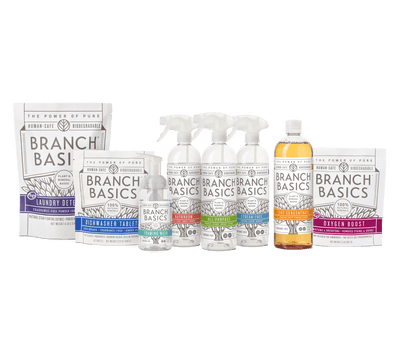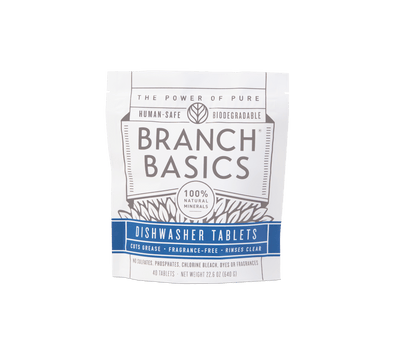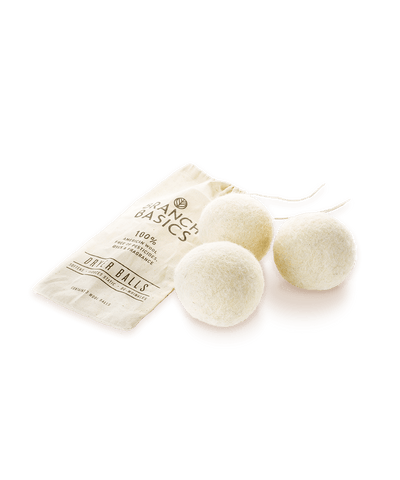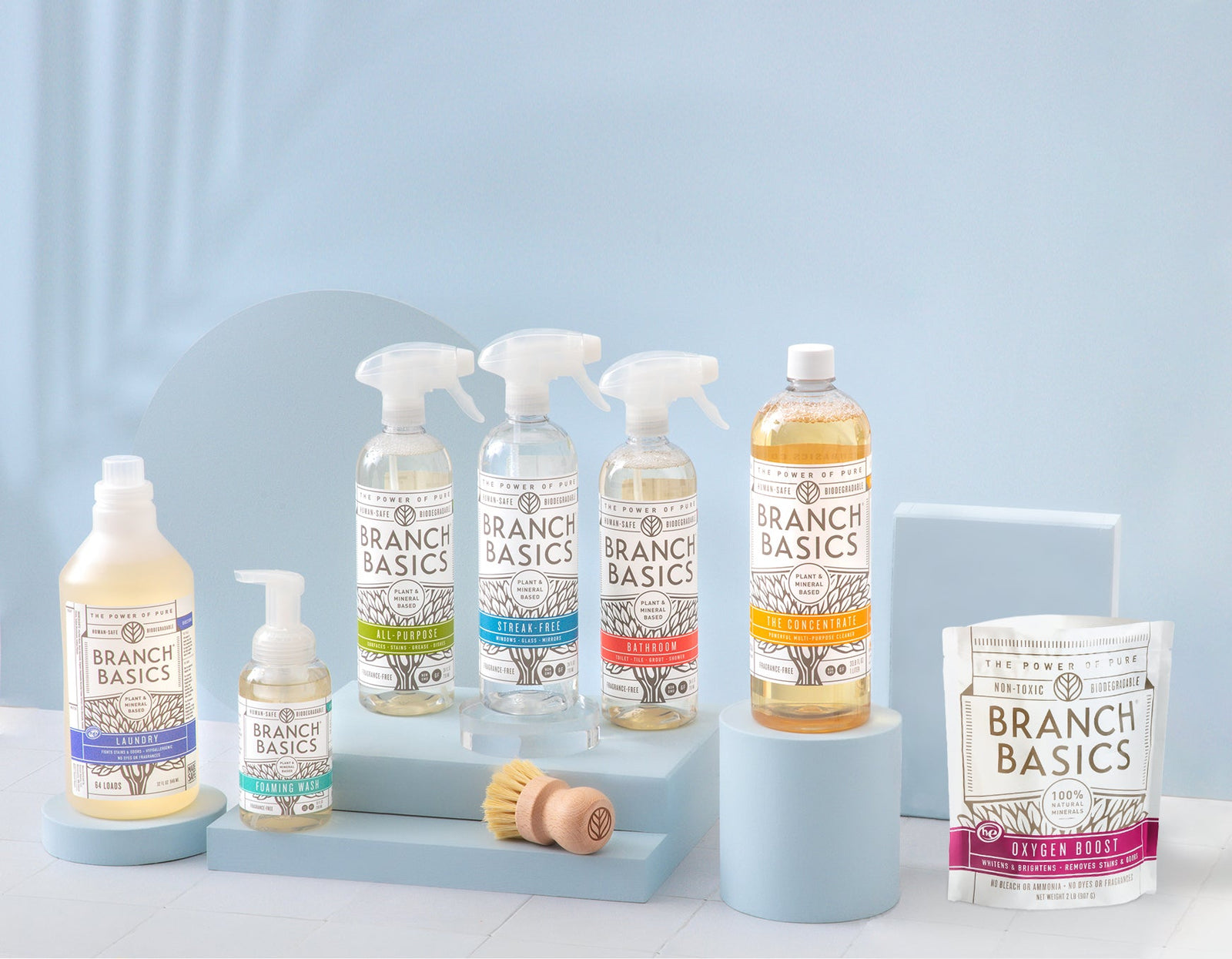Safe Hand Soap for Toddlers: 5 Natural Options
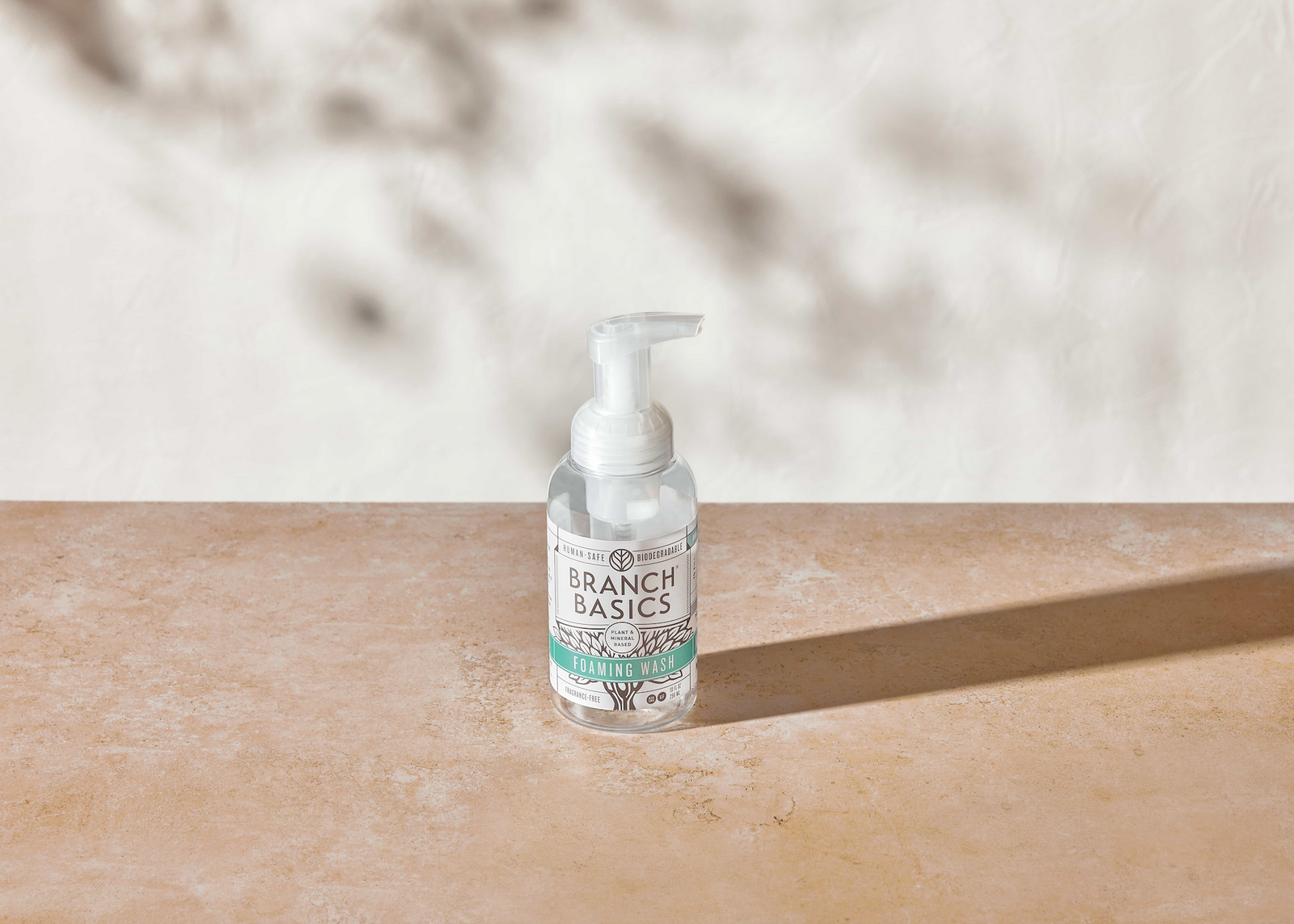
Hand washing is one of the healthiest habits we can teach our toddlers, but not all soaps are created equal. Many conventional hand soaps contain harsh chemicals that can irritate sensitive skin and expose little ones to unnecessary toxins.
As mothers ourselves, we make dozens of trips to the sink every day to ensure little hands stay clean, especially during cold and flu season.
So, what’s the safest hand soap for toddlers and children?
In this guide, we’re sharing five safe, natural, and non-toxic hand soaps for toddlers that are gentle, effective, and parent-approved.
Why Choosing a Safe Hand Soap for Toddlers Matters
From pregnancy-safe cleaning products and skincare to healthy baby gear, there’s something about bringing new life into this world that makes us take toxins more seriously.
Unfortunately, hand soap—the most frequently used personal care product in most homes—is often overlooked.
This is understandable as most of us don’t think much about what we wash our hands with.
However, most conventional hand soaps contain a toxic soup of synthetic chemicals, like hormone disruptors, carcinogens, and allergens.
What does it matter if we just apply hand soap and rinse it off within a minute or so?
It matters a lot, especially for toddlers and young children. Here’s why.
Per OSHA and other reputable sources, the skin readily absorbs most of the chemicals it comes into contact with, in addition to what’s inhaled from vapors and fragrances.
These ingredients can be particularly harmful to babies, toddlers, and children, who are more susceptible to the acute and cumulative toxic effects due to their smaller size and underdeveloped organs and systems.
Plus, despite that hand soaps are formulated to be washed down a drain, many of these chemical ingredients are not good for the earth.
Bottom line: what you wash your child’s hands with does matter for their health and the health of the planet they will inherit.
Fortunately, swapping out toxic hand soap for natural hand soap is quick, affordable, and no big deal if you know what to look for.
Harmful Ingredients to Avoid in Hand Soap
Now that you know the most common hand soaps are full of potentially harmful chemicals, let’s look at some specific ingredients to watch out for.
The following are ingredients parents and caregivers should avoid in synthetic and even natural, or “organic” hand soaps:
- Alcohol: Found in many antibacterial soaps, can be harmful to the liver if used in excess and drying for delicate skin.
- Ammonia: Ammonium chloride is added to hand soaps to increase viscosity and lather. Like all ammonia products, it is toxic to humans if ingested or inhaled. It can also create noxious gasses if mixed with other chemicals.
- Animal by-products (in some cases): Some natural soaps are made with animal products, such as goat’s milk or tallow. However, others may contain extracts from animal glands or urine that you probably don’t want to use on your skin…especially if you’re vegan or want a cruelty-free product.
- Antibacterial ingredients or labeling: With the exception of certain essential oils, an “antibacterial” label means a product has a high percentage of alcohol or antibacterial chemicals added.
- Chlorine: This chemical may be added to antibacterial hand soaps designed for healthcare settings. Like bleach, it should be avoided due to its caustic nature and other harms. Learn more in: Is Sodium Hypochlorite (Bleach) Toxic?
- Dyes: These may be added to soaps to make them appear more appealing to toddlers and children. However, synthetic dyes contain a cocktail of potentially harmful chemicals, including heavy metals and formaldehyde-releasing chemicals, that are not healthy for children.
- Ethoxylates: A type of chemical-based surfactant detergent-like chemical that’s highly toxic to aquatic life and is associated with reproductive and developmental effects in animal studies.
- Formaldehyde: Some hand soaps and personal care products contain formaldehyde-releasing chemicals that act as preservatives. Of course, you won’t find the word “formaldehyde” on the label. Instead, look for these ingredients to avoid:
- DMDM hydantoin
- Methylene glycol
- Quaternium 15
- 3 dioxane
- Fragrance, apart from 100% pure essential oils: Synthetic fragrance is considered a top allergen and can contain dozens of endocrine-disrupting chemicals and carcinogens.
- Methylisothiazolinone & Methylchloroisothiazolinone: Synthetic preservatives linked to allergies and immunotoxicity.
- Parabens: Paraben exposure in utero has been linked to childhood weight problems, changes in the reproductive health and proper genital development of boys, and impaired testosterone function in boys.
- Petroleum solvents: These come from petroleum products and typically are labeled with the word “poly” or “P.” Petroleum-based solvents have a laundry list of potential toxicity concerns, and many are endocrine disruptors and possible carcinogens.
- Phosphates: Phosphate residues have been known to cause nausea, diarrhea, and skin irritation. Phosphates are also toxic to rivers and lakes. They remain active even after wastewater treatment processes and become a “toxic fertilizer” by increasing algae growth as they suffocate salmon and other aquatic life.
- Phthalates: Endocrine-disrupting chemicals linked to hormonal diseases, including cancer. They are common in fragranced products. Learn more in: All About Phthalates and Why You Should Avoid Them.
- SLS (Sodium Lauryl Sulfate), SLES (Sodium Laureth Sulfate), and other Sulfates: These synthetic surfactants and emulsifiers are linked to organ system toxicity and are eye, lung, and skin irritants. SLES may also contain dioxins, a known carcinogen the EPA says causes an “unreasonable risk of injury to health.”
- Triclosan: This antibacterial ingredient used to be in nearly every antibacterial hand soap. Fortunately, research showed it had no benefit as an ingredient in hand soaps and has therefore been banned in many over-the-counter products. Unfortunately, it may still be found in hand sanitizers, wipes, and oral care products and may be used in hand soaps designed for use in healthcare settings. It’s also one of the top contaminants of concern worldwide.
Yes, this is a long list of ingredients to avoid!
This is why we recommend using a tool like the Environmental Working Group’s Skin Deep Database to vet hand soaps and other personal care, cleaning, and household products.
You can also look for these badges and certifications to ensure a safer, natural product:
- Cruelty-free
- Made Safe Certified
- Fragrance-free
- Organic
- Non-GMO
5 Safe Hand Soaps for Toddlers
In the spirit of simplicity, we present our top five picks for safe hand soaps for toddlers.
Yes, there are more than five safe hand soap brands out there (and you can use that EWG Skin Deep database to help find them).
However, these are the products we choose to use on our kids because they’re safe for little ones, healthy, affordable, and effective.
We’ve even included some DIY options for you crafty parents out there.
1. Branch Basics Gel Hand Soap
Our gel hand soap is human-safe, natural, refillable, and formulated using only the safest and gentlest ingredients for people, their skin, and the planet.
It’s also completely safe for pregnant mamas, babies, toddlers, children, and adults alike.
Branch Basics Hand Soap is free from all the synthetic ingredients of concern listed above and is perfect for delicate or sensitive toddler skin.
Here’s what’s in it:
- Organic Chamomile: Gently cleanses without stripping delicate hands while natural antioxidants protect the skin’s barrier.
- Aloe Vera: This moisture magnet keeps skin soft and supple while boosting hydration and calming inflamed, dry, chapped, or irritating little hands.
- Meadowfoam Oil: Nourishing and protective, this plant-based oil seals in moisture to keep their still baby-soft skin soft and squishy.
Shop our new Branch Basics Hand Soap for your family.
Want more human-safe toddler cleaning tips? Check out: How to Clean Your Baby’s Toys and Bottles Naturally.
2. Branch Basics Foaming Wash
If your toddler loves bubbles and pumping their own hand soap (and what toddler doesn’t?) Branch Basics Foaming Wash is a slam dunk.
Foaming Washing is our original hand soap, made using our signature Concentrate and water in our special Foaming Wash bottle.
Branch Basics Concentrate is a toddler-safe formula designed to replace every cleaning and laundry product in your house.
When diluted and made into Foaming Wash, it is gentle enough for the most frequent hand washing, as a facial cleanser, makeup remover, and even a baby wash (though it is not a tear-free formula).
Branch Basics Hand Soap is a gel soap, and Foaming Wash is a foamy hand soap.
So, if your little one likes the feel and fun of a gel, go with Branch Basics Hand Soap.
Foaming Wash will be perfect if they prefer bubbly hand soap or the ease of a chunkier pump.
Both are effective for hand washing, super gentle and human-safe and made using only safe and natural ingredients.
3. Castile Soap + Water
We have loved using non-toxic, 100% pure, fragrance-free liquid castile soap during pregnancy and on our babies and toddlers. Here are a few of our favorites that are fragrance free and have all ingredients rated a 1-2 on EWG Skin Deep!
How to Use Liquid Castile Soap as a Safe Hand Soap for Toddlers:
Castile soaps are best diluted with water for toddlers. Here’s how to make your own hand soap:
- Fill a hand washing dispenser 1/4 full with liquid castile soap and 3/4 full with filtered water.
- Shake lightly, and you’re ready to wash.
Helpful Tip:
- Castile soap works best with a foaming pump vs. a traditional pump due to issues with clogging and squirting (just imagine the mess!).
4. Castile Soap + Nourishing Plant Oils
Adding rich plant oils like jojoba, almond, or olive oil can help prevent drying while nourishing your toddler’s sensitive skin.
Here’s a basic recipe for a DIY toddler-safe hand soap with plant oils:
- 1/8-1/4 cup liquid castile soap
- 2 1/2 cups of water
- 1-3 tablespoons nourishing oil such as jojoba, argan, almond, olive oil, or avocado oil
Mix everything and place in a soap dispenser.
Note: Coconut oil is not recommended as it will solidify at room temperature and cause clogs.
5. Bar Soap
If you and your toddler prefer bar soap, unscented bar soap is a wonderful safe and natural option.
We recommend the following unscented bar soaps that all have ingredients rated 1-2 on EWG Skin Deep!
- Suds of Love
- Luminance Bar Soap
- Osmia Oh So Soap
- Little Seed Oat Exfoliating Bar
- Little Seed Goat Milk Bar
It can also be used at bath time as a body or hair bar soap (although it is not tear-free), further simplifying your routine.
Toddler-Safe Hand Soap FAQs
So many questions come up for parents when switching to human-safe products—we know because we’ve been there!
Here, we answer your toddler-safe hand soap FAQs.
When can I start using regular soap with my toddler?
You can start washing your toddler’s hands with these human-safe options immediately.
Their all-natural and gentle ingredients make them safe enough for the most sensitive skin—including babies!
How do I wash my toddler’s hands in a public restroom?
Although any hand soap is better than none when using a public restroom, we like to carry a travel size of Branch Basics Foaming Wash to use when out and about.
The small size fits perfectly into a purse or diaper bag and can be whipped out whenever human-safe hand washing is needed.
How do I get my toddler to wash their hands?
The best ways to get your toddler to wash their hands are to start young (even babies should have their hands washed), make it fun, be consistent, and model good hand washing behavior.
Here are some other tips for reluctant hand washers:
- Sing a hand washing song! You can look up different hand washing songs online, like “Tops and Bottoms,” and then sing along with them as they wash. This helps with transitions, makes it fun, and helps ensure they wash long enough.
- Let them make their own soap, decorate the bottle, or add essential oils. They’ll be more likely to participate in hand washing if they’ve helped to make their own soap.
- Wash your hands with them. Many toddlers do not like being left alone, including to wash their hands. Try washing together to see if this reduces their hesitancy.
- Offer hand washing choices: Having just a couple of choices can make a toddler feel in control. In this case, you might offer two different natural hand soaps, “Would you like bar soap or foaming wash?” A little empowerment goes a long way with toddlers!
- Make it easy for them to wash their hands. Toddlers love to be able to do things for themselves, and hand washing is a great DIY activity. To make this easy for them, have a step stool ready at the sink, hand soap that’s easy to use (test out gel vs. foaming vs bar), and a hand towel within easy reach.
Finally, be OK with less-than-perfect hand washing. Sure, we all want them to wash thoroughly and for at least a minute. However, this may not always happen.
Instead of nit-picking, be sure to appreciate them for what they did accomplish (even if that means soap all over the counter, water splattered on the mirror, and a hand towel left on the floor!) and continue modeling the type of hand washing you want to see.
Toss the Toxins With Branch Basics
It’s best to keep things simple when it comes to toddlers and hand washing.
This means choosing a hand soap with a short list of natural and human-safe ingredients that’s easy for them to use at home, at school, or on the go.
Ready to upgrade your toddler’s hand washing routine?
Branch Basics Hand Soap and/or our Starter Kits contain everything you need to make your own toddler and family-safe cleaning products, hand soap, laundry products, and more.
For travel, outings, or backpacks, we also recommend our Travel Kit or Mini Foaming Wash to help you and your toddler avoid synthetic chemicals when you’re away from home.
For more on natural and human-safe child rearing, pregnancy, and parenting, check out the following articles:

Marilee Nelson
Marilee Nelson is an Environmental Toxins expert who has spent nearly 30 years advocating for the chemically-sensitive and chronically-ill. She is a Board Certified Nutritionist, Certified Bau-Biologist and Bau-Biology Inspector and specializes in Food As Medicine. She has helped thousands of families and individuals identify, heal and recover from toxic exposures and is on a mission to revolutionize the way American families view their health.
